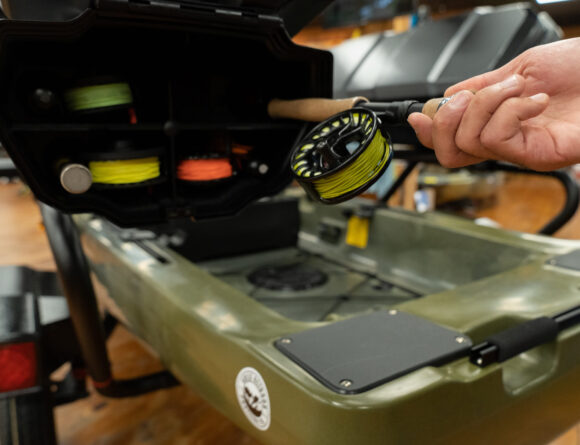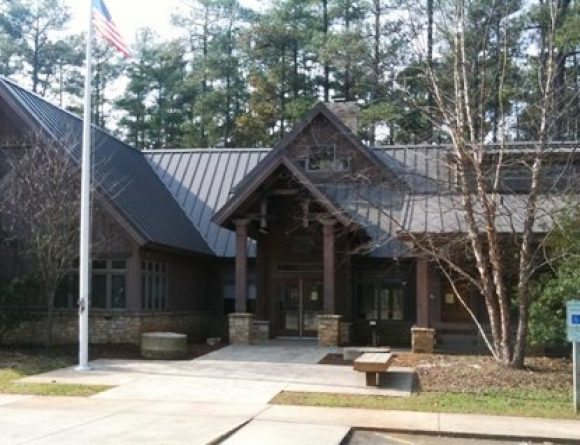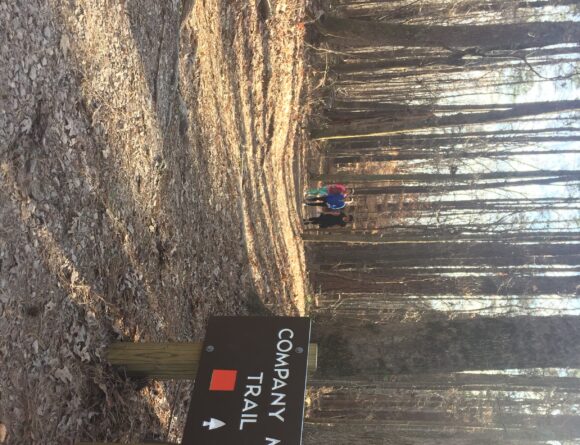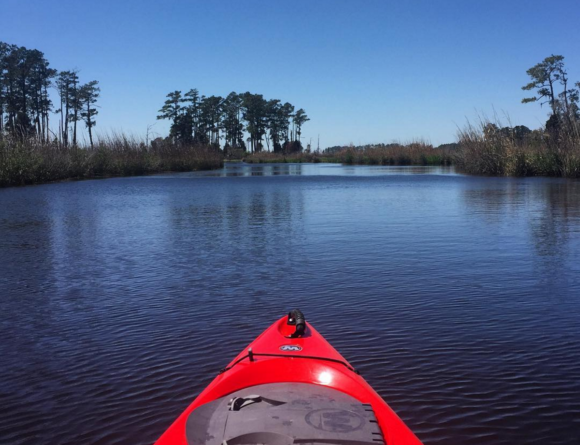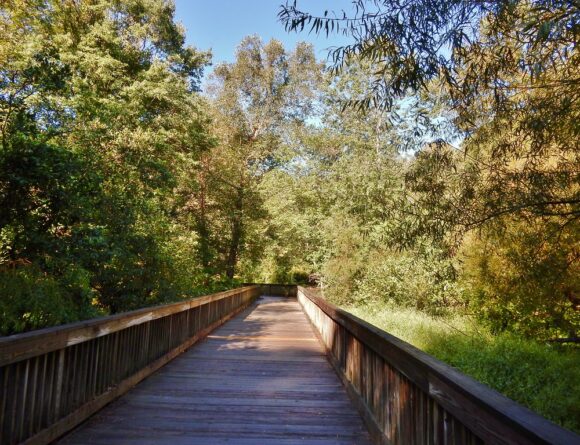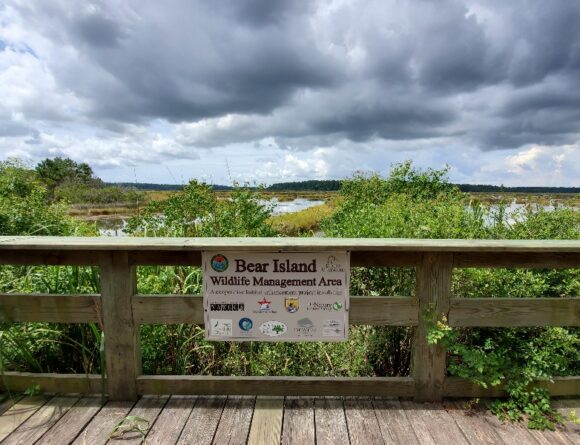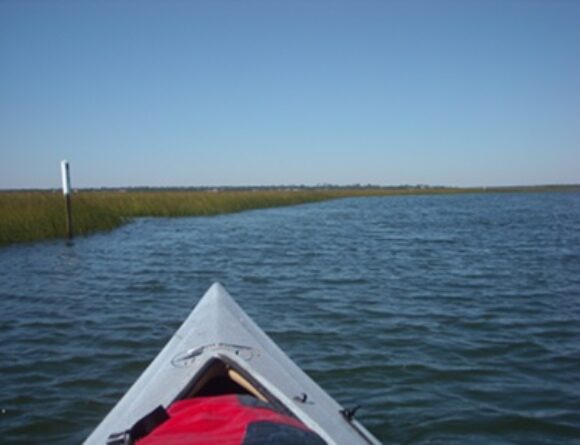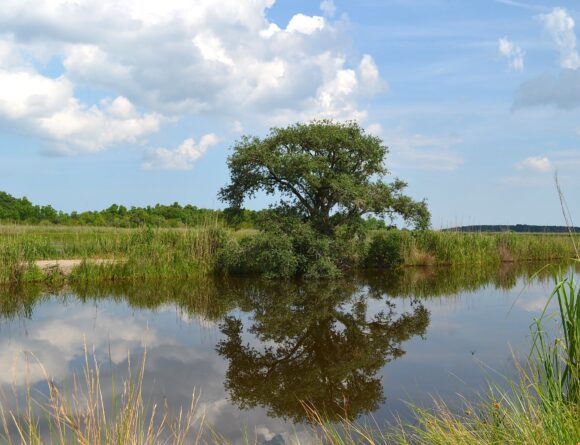Bear Island, located in Onslow County, can be reached by ferry, kayak, canoe, and at one point– pirate ship! This park has a story to tell. The best way to learn about it is by seeing it yourself! A well-trafficked area in the summer seasons, but a treasure year round!
The paddle to Bear Island is a good one year round. What makes it especially good is that it’s the only way to get to the island. After an easy 2-mile paddle through a shallow, relatively protected marsh on a well-marked canoe trail, this three-mile-long barrier island awaits. Walk the lonely beach front, devoid of the sun worshippers and picnickers who will soon descend. Note that this all ends once Hammocks Beach State Park fires up its ferry service for the season. This season is on a limited bases beginning April 1, full-time, seven days a week from Memorial Day through Labor Day. Until then, you’ll be so enchanted you won’t want to leave — and you needn’t thanks to the island’s 14 campsites.
Look forward to therapeutic walks along the sandy shore (categorized as a 4-mile hiking trail). The intriguing task of shelling is literally at your feet. Rumor has it, the winter season has the best stock of shells. The earlier in the day, the better variety in store. Remain entertained by testing your luck for some puppy drum, trout, or flounder when you bring a fishing rod. In the warmer months, you my find yourself taking a dip in the salty waters around. Keep your eyes peeled for the various bird species soaring around the island. If you’re lucky, you may spot from a distance Loggerhead and Green Sea turtles coming to nest. Black bears have even been reported along the shore and in the forest. Despite the original name, Bare Island, due to lack of vegetation– there sure is a lot to see!
The scenes you’ll encounter are as rich as the history behind it. It was first inhabited by Neusiok and Coree Indians, later frequented by pirates like Blackbeard, eventually served as military grounds during the Civil War and World War II, purchased by a retired neurosurgeon, eventually donated to the NCTA who then donated it to the State to develop as a park open to minorities and eventually integrated following the Civil Rights Act. This beach has seen a lot of history.
Expert Picks
JaalaI love my Cloudsurfers! Just the right amount of cushioning and really lightweight. I use them for almost all of my road running–anything from 3-10 miles. There’s enough space in the toebox without being too roomy everywhere else and my heel stays in place. I love the color too!
Raleigh
JessicaMy favorite sweater! I have it in almost every color because it is both cozy and flattering!
Raleigh
Scott WoodI like the interesting texture of the fleece. It feels a bit more durable than other fleece jackets I’ve had. Nice and cozy, but still looks nice when I’m out on the town.
Raleigh
Amy QuinnThis fleece is so versatile. It’s not too thick, so it layers just right and is enough by itself for most of the cooler months. The short pile means that whatever my kids find to roll around comes off pretty easily. Both my son and daughter love theirs!
Raleigh
Rich ChisholmI’ve been a fan of the standard Grayl Geopress, but this new titanium version is so much better. I can also use it to boil water for cooking, and it keeps all the same features as the original but at a lower weight and a tougher material.
Chapel Hill
Bittu AliThis is the pinnacle of Hobie Mirage Drive technology. It is the only Pedal Drive Fishing Kayak that offers forward and reverse, Kickup Fins and 360 degrees of directional propulsion. The 2024 XR model has been upgraded to allow for tool-free adjustments and directional lockout.
Raleigh
Bittu AliThis kayak is amazing -by far the most innovative fishing kayak today. Think of an e-Bike crossed with a Pedal Drive Fishing Kayak. Powered by Minn Kota technology, the propulsion system seamlessly integrates your preferred level of electric assist with human propulsion.
Raleigh
Scott WoodThis is the pinnacle of fishing sling packs and it’s truly submersible. Deep wading will not get your gear wet, so feel free to swim across that deep pool in the canyon or take wave over your head in the surf. It’s not a problem!
Raleigh
Amy QuinnThis jacket is so lightweight but definitely takes the chill off. It’s a great 3 season jacket, and so versatile!
Raleigh
DrewI’m an avid paddler and spend a lot of my days on the water. The 10×25 NOCS binos are perfect to keep in my boat bag. They’re brightly colored and waterproof so I know I’ll be able to find them when my kids drop them in the water! At least close to the shore, that is.
Charlottesville
Anna LawrenceThese are a go to through fall and winter! I just throw on socks when it gets colder. So comfortable!
Raleigh
Rich ChisholmOn my recent trip to backpack the Teton Crest Trail with my family, this tent really made a difference. It is super lightweight but still roomy enough for 3. Under 3 lbs and really compact with very user friendly features like the light pocket and vents built into the vestibule on both sides.
Chapel Hill
Lee QuinnMy go-to flannel once the weather turns cool! I just keep getting more colors!
Raleigh
Stewart KnightAn extremely well-designed bag. Easy to carry and stow with multiple large zippered pockets for separating gear. I’ve packed for a week in the Virgin Islands and a week in the Rockies with just this bag. It’s also good-looking luggage to boot!
Raleigh
Rich ChisholmI think this pack is perfect for my trips that are single overnight, or for a long day hike. It is just big enough without being a full-on backpack size.
Chapel Hill
Rich ChisholmThese are affordable Aviator sunglasses with style! I love all the colors but the best thing is how they don’t slip on my nose, are polarized, and only cost 35 bucks!
Chapel Hill
Travis ZarinsThis is my go to jacket for cooler months. It’s the perfect weight for the Southeast.
Raleigh
Johanna BreedI love this pant! I’ve done everything with it from being on a plane for hours to hiking. I think the tapered cut is so flattering!
Chapel Hill
Scott WoodThis is a beautifully designed bag that takes the stress out of airline travel with fly fishing gear. I am able to fit at least 4 rods, 4 reels, tippet, leader, and fly boxes for a week of trout fishing with room to spare. I’ve also started using it for local bass and saltwater trips. Everything is safely in the same bag with no bulky rod tubes rolling around in the bed of a truck.
Raleigh
Rich ChisholmThis is a great carry-all bag for those little items you need but don’t have room in your pockets for. I like the over-built design even for something this small – will last practically forever. Detachable crossbody strap so it can convert to a belt bag is awesome!
Chapel Hill
Zach RobertsI’m in my second pair of Bozemans! They are my preferred work shoe and casual wear shoe. The more supportive midsole takes care of my feet and legs all day, while being stylish and comfy for travel and social excursions.
Charlottesville
StacyThis bag goes everywhere! I take it to the park, to the grocery store, to the trail and to the beach. It fits just the right amount of stuff with just the right amount of pockets.
Raleigh

























